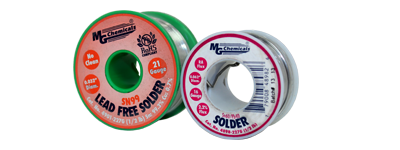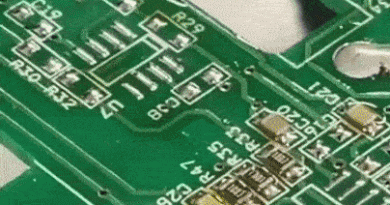How to Use a Soldering Iron
Here is a step by step summary that explains how to use a soldering iron to solder an electronic component, for more detail keep reading below.
- To get started, make sure your soldering iron is fully heated up.
- It is important to keep the tip of the soldering iron clean while using it, use a wet sponge to keep the tip cleaned.
- Clean the tip before you start soldering and continue to clean the tip as you continue the soldering process.
- Touch the soldering iron tip to the component you want to solder.
- After a second or two, introduce the solder to the joint area. The heat will conduct to the solder and cause it to flow. Try not to melt the solder directly with the tip of the soldering iron. This will form a cold joint which is brittle and may not conduct electricity.
- Allow the joint to cool before moving anything.
Soldering is the process of melting a metal on other metal components to bind the two components together. The most common tool used for this is called a soldering iron.
Soldering is not the same as welding. When you weld something, the components are directly melted together without using solder. Solder is a softer metal with a lower melting point. This allows the components to be connected without using the high temperatures associated with welding and it preserves the integrity of the components. Because solder is conductive, it is widely used in electronics.

Using solder to bind things
Solder is the actual material used when binding things together with a soldering iron. Solder has traditionally contained lead, but it is gradually being phased out due to health concerns. Most lead-free solder is slightly more difficult to use than leaded varieties; when melting unleaded solder, the soldering iron needs additional time to recover from heat loss.
Manufacturers of soldering irons use various techniques to make their soldering irons work better with lead-free solder. One strategy is to make the soldering iron heating element more powerful, which helps keep the soldering iron tip at a constant temperature. Other techniques include assembling the heating element and the soldering iron tip as a single contiguous element in order to transfer the heat more rapidly and therefore help maintain the tip temperature.
Using a soldering iron to heat and melt the solder
Most low-priced soldering irons typically heat the tip between 800 and 900 degrees Fahrenheit, so be very careful when using a soldering iron. More advanced soldering irons include a heat control so the user can select a specific temperature for different projects and types of solder. It is important to keep the tip of the soldering iron clean while using it. Common practice is to use a wet sponge to keep the tip cleaned. Clean the tip before you start soldering and continue to clean the tip as you continue the soldering process.
Heat the component, flow the solder
Touch the soldering iron tip to the component you want to solder. After a second or two, introduce the solder to the joint area. The heat will conduct to the solder and cause it to flow. This entire process should only take 3 or 4 seconds, but it is important for the solder to flow to ensure a good electrical contact. If the solder looks like a ball or is lumpy, it is likely a “cold solder joint” and will not conduct electricity. If this happens, reintroduce the soldering iron to get the solder to flow in order to create a good electrical contact.


Thanks Wayne,
For writing such a informative post. But sometime it will damage while cleaning. So what can do?
If the tip has already been damaged, you’ll need to scrap, or grind off the sludge from the tip, then repeat these steps.
The blog is very informative. This is the basic of understanding solder iron before performing soldering.